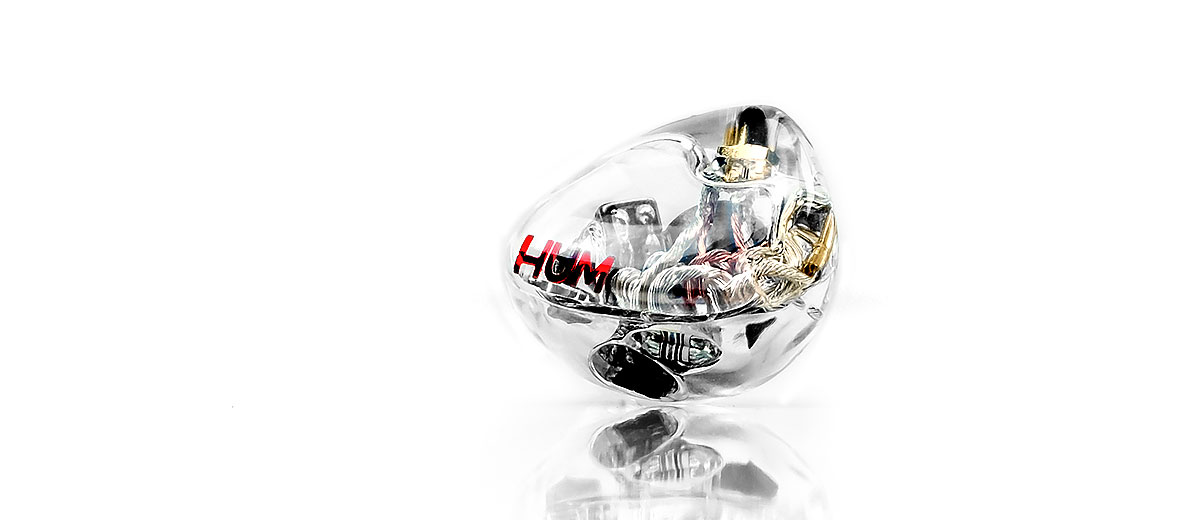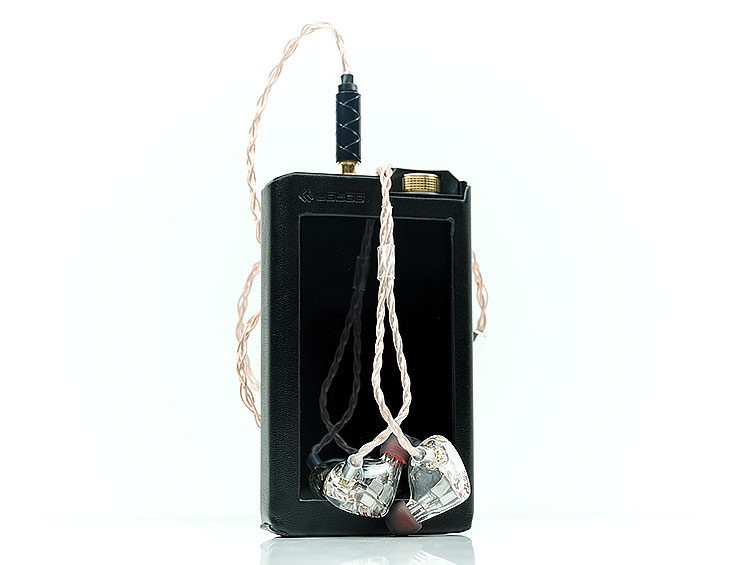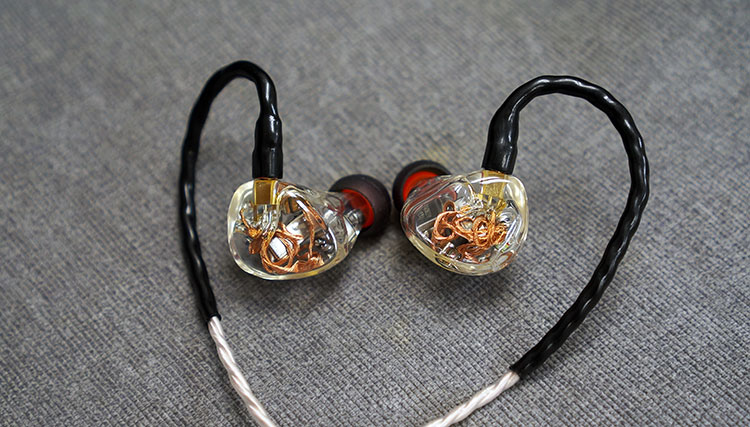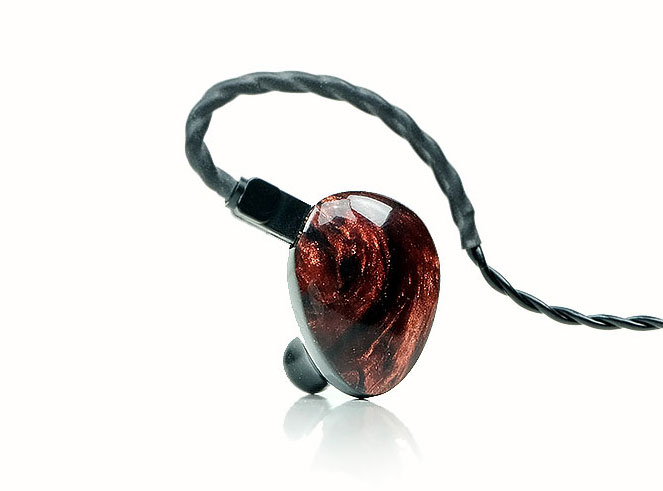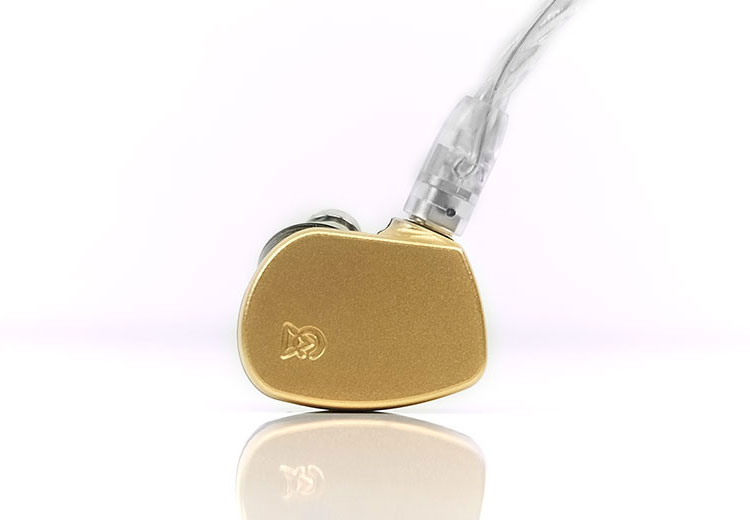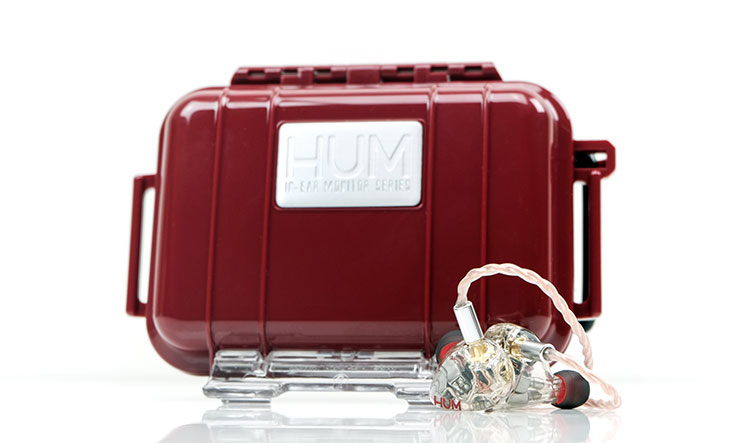Sound Impressions
5 Minutes
All of the below is based on the Dolores performance after the first 5 minutes of listening. This is a critical but a slightly misunderstood caveat with the Dolores signature (and the Pristine). Because of the way HUM has designed the Dolores you need to have it running for around 5 minutes initially to get the most optimal response. By that I mean getting a little more low-end presence.
However, what does this 5 minutes warm-up time actually mean to someone who maybe listens to a few songs, stops, starts again a few minutes later rather than the persona who listens non-stop for hours? How long must the gap between playing be before we have to start the process all over again?
The answer is not clear cut according to HUM. The gap can be 5 mins, 15 mins or longer depending on your usage. The basic premise is that the more you listen to the Dolores and for longer the bigger the gap can be before needing to do the 5-minute warm up again.
Summary
The Dolores delivers a fairly neutral presentation with more of a mids to treble emphasis than the warmer more rolled off Pristine. It is the type of presentation tuned for nuanced detail, crystal clear and accurate imaging and a satisfying level of speed you generally associate with balanced armature signatures.
Of course, the flip side is that the low-end lacks a little body and heft so instrumental notes, supremely detailed and fast as they are, lack a little authority. I believe HUM are more than aware of this when they stated they wanted to create something more “reference”.
I would define the Dolores as more of a semi-analytical signature with just a hint of a low-end bump to prevent the signature from sounding overly dry or lean. The fusion of some copper internal wiring and the copper Tara cable will also contribute a little needed wetness to the Dolores sound and that is important because of its emphasized upper mids and treble up to 8k.
The Pristine’s tuning dipped beyond 5k so those coming from the previous flagship will immediately notice the difference in the two’s mids and treble performance with the Dolores offering more headroom and air.
Staging
The Dolores has excellent width and an airy top-end with plenty of headroom. It does less well with depth though it is by no means a shallow sound. It does quite well in creating a clean and open sounding bass response it just doesn’t have enough amplitude to create a punchy or powerful low-end.
Instead, like any good BA tuning it opts for a very tight, pacy well-designed bass response with less of a dip into the lower mids than the Pristine to keep the signature quite coherent and even balanced.
Mids beyond 1k is more forward sounding (cross-over point) so vocals will come a little closer though not so much to sound overly intimate just a little clearer which I quite like Upper mids through to the lower treble are also quite forward so percussion timbre is fairly prominent in the Dolores staging also.
Bass
The low-end of the Dolores is relatively neutral with just the tiniest of emphasis below 120Hz but perhaps 1-2dB at most. So I would not call it totally flat but neither would I say it packs a punch or delivering impressive weight.
It is a throwback a little to the days when BA responses sat on the side of speed, clarity, and definition. Certainly, compared to the Solaris thumping dynamic driver it is bass-light experience but neither is it rolled off. Neutral yes, but relatively linear also with good extension.
Mids
With the crossover at 1.8k the Dolores get a substantial lift beyond in the mids, upper mids, and lower treble. Vocal presence gets pushed forward and upper mids timbre gets pushed a little further forward.
The Dolores does retain some excellent treble headroom though so it is not a tight or overly intimate sounding midrange presentation. In fact, at times it sounds impressively wide with a very nice level of detail and articulation; all healthy signs of a good BA performance.
Instrumental timbre is neutral, slightly lean but not brittle sounding. Critically, there is just enough wetness in the Dolores timbre to preventing it from sounding dry or harsh. Yes, at times percussion timbre can have an odd-harmonic bias creeping in with that treble emphasis but it is not a peaky sound at all for me.
Treble
Treble presence is forward but coherent sounding. The high-point is closer to 5k with a subsequent lesser bump at 8k before it starts to slide off so it is not a peaky treble but it is an energetic one and does deliver plenty of odd-harmonic overtones. These tones work great for acoustical plucks and percussion snap which comes across as crystal clear in the Dolores presentation. Though an improper pairing or poor recorded tracks can show up as sibilance.
The Dolores treble does not quite have the same body or effortless extension that some of the new stats IEMs can deliver such as the Noble Khan but I do find it quite open sounding and pleasing treble sound once you get past that initial 5 mins warm-up time. Before it can sound a little hard in the attack and not quite as articulate.
Matchability
Efficiency
The Dolores is rated at a fairly hefty 68Ω but also a fairly sensitive SPL at 118dB. You do not need huge current to get the Dolores sufficiently loud on most sources but a quality amp signal will maximize its dynamic range and the amount of detail it can deliver. A weaker amp’ed source may not suffice for the Dolores to sound optimal with its unbalanced stock cable leading you to think it is rather inefficient.
For example, the HiBy R3 needs a volume setting of around 55-60 in low gain for the Dolores which is nominally high. This is more to do with the fairly weak amp in the R3 presenting a driving challenge for the Dolores than any inaccurate SPL spec sheet.
The HiBy R6 Pro, in contrast, sits fairly happily around 30-35 in unbalanced low-gain and does sound like it has got a ton more headroom than the R3 when paired with the Dolores. I suspect the R6 Pro is delivering around 200mW into that 68Ω rating from its 3.5mm output which seems more than enough for a fairly dynamic presentation.
That being said, the Sony 1Z 60mW+60mW unbalanced output, (yes, it is that weak), does perform a lot better than the R3’s 56+56mW so again, the quality of amp does play a role here. However, paired with the 0.5W 3.5mm rating of the Lotoo PAW Gold Touch output the Dolores sounds a lot more vivid and involving. You can tell that it enjoys the additional power a lot.
Noise
Excellent for noise on pretty most all portable sources tested and no issue at all on high impedance outputs such as the HiBy R6 (non-Pro) with its 68Ω rating. I also could not detect any hiss from higher noise floors such as the HiBy R6 Pro and FiiO’s older X3iii. It is dead silent on flagship sources such as the Lotoo PAW Gold Touch and the Sony 1Z.
Synergy
The exact or best synergy depends on what you want the Dolores to do really. You can either opt to inject a bit of warmth and smoothness into its timbre by selecting the HiBy R6 Pro or the Sony 1Z. Or you can opt for fine levels of articulation and micro-detail with the DX200 and the Lotoo PAW Gold Touch. My vote is with the latter. If you need warmth then buy the Pristine.
HiBy R6 Pro
My own preference for tonal tweaking was the R6 Pro. I really have a profound respect for their DSP technology (MSEB) and how it can tweak the timbre of a monitor in any way you like. That, combined with its excellent output power and good noise performance, makes the Dolores pairing a very solid offering for a fair price.
Ibasso DX200
If you do not fancy endless DSP tweaks and still like something quite natural sounding with an excellent focus on detail then the DX200 with Amp 1 or Amp 8 are excellent pairings. I pick those two also due to their excellent power output ratings.
I particularly love Amp 1 for ethereal or more nuanced vocal performances such as Anette Askvik and Kitchie Nadal where I want superb control from the Dolores. The AMP 8 is a little more dynamic and still relatively quiet with the Dolores which I prefer if I want to play any punchier rock or dance.
Sony 1Z
The Sony 1Z also provides a nice warm punchy low-end and a very black background. However, there are some limits to how punchy and earth-shattering you can really deliver from the Dolores low-end. Better, in the long run, to focus on the Dolores superior attention to detail and precision and for that, the Lotoo PAW Gold Touch does it better.
LPGT
The Lotoo may seem more neutral than the Sony or the R6 Pro and you do lose a tiny bit of low-end in comparison. However, after a while, you start to appreciate how well the Dolores delivers that fine detail and excellent instrumental separation that the LPGT is so good at. Treble is clean and clear though not what I would call an overly bright signature. More of a healthy level of sparkle and superb articulation. It is that level of engagement that I find the Dolores to be at its most rewarding.
Select Comparisons
HUM Pristine-R
$1199
Technical
The Pristine was the previous flagship before the Dolores came along. Well, at least in terms of price because I dare say a few die-hards will still have the Pristine as their go-to. The Pristine was also the first statement piece from HUM regarding the concept of how they tune with “less is more”.
Like the Dolores, it has but 2 balanced armature drivers with a 2-way crossover. The majority of the R’n’D is focused on getting the most out of those driver units. The differences though between these two including the use of copper and silver internal wiring compared to copper Litz on the Pristine and different types of balanced armature drivers but HUM won’t reveal that part.
The impedance is a little higher on the Pristine at 91Ω compared to the Dolores 68Ω. Both have a fairly sensitive SPL at 120db for the Pristine compared to the 118dB of the Dolores. On a decent powered DAP, such as the Sony 1Z, you will not hear much of a volume mismatch between these two.
Performance
The Pristine timbre is a little warmer with a bit more sub-bass emphasis and mid-bass bloom. Mids are not quite as clean and clear as the Dolores though instrumental timbre has a little more body from that heftier low-end.
Treble is a little more uneven and not as forward sounding. In fact, its fairly rolled off beyond 5-6k in comparisons with less air and headroom. It contributes to what I perceive to be a more even-harmonic, smooth presentation from the Pristine.
The Dolores is flatter in the bass with less warmth and weight but more open in the mids and a much cleaner instrumental timbre. Instrumental separation is more precise and the decay a little faster creating a perception of more space that allows a forward vocal presence to breathe a bit better.
The enhance treble headroom with that burst of energy up to 8k also helps inject a bit more air in the upper mids and more sparkle beyond. Percussion may not have the same weight or richness as the Pristine but has more snap and perceptible snap and articulation.
Preferences
Honestly, these two monitors are fairly different in their approach. I do not think the Dolores is the obvious upgrade on the Pristine unless you do prefer a cleaner more neutral sound and more mids to treble emphasis.
I do think if you crave a little more clarity and nuanced midrange detail the Dolores is a better fit. But if you need a warmer more authoritative low-end and harmonic balance the Pristine will serve you well.
Noble Savant II
$599
Technical
Noble offers very little technical data on the Savant II but we do have to presume that some of what held true for the Savant original applies to the second-gen. It is likely this is a dual balanced armature driver monitor and this why we decided to compare it to the more expensive dual balanced armature driver design of the Dolores.
Traditionally, Noble monitors have been relatively easy to drive though not the most sensitive on the market. We would assume around 30Ω based on their legacy builds and around 110-115dB. Compared to the Dolores, the Savant II SPL is a little lower meaning you do have to push the volume up marginally on moderately powered DAPs such as the Sony 1Z though not by a huge amount.
Build
The build is on each is a little different but both are quite comfy in the ear. Neither are aggressive ‘custom-universal’ designs but they apply little or no pressure in the ear and put moderate emphasis on the seal with the selection of tips. Noble does supply more tips than HUM which is something I would love to see HUM address. The Tara cable on the Pristine is miles better and more revealing compared to the Savant II’s basic 4-wire OFC.
Performance
It is early days yet for us with the Savant II so do expect a full qualified review in the coming weeks and these are initial impressions (with their stock cable). In terms of tone or timbre, the Savant II is warmer with a slightly thicker instrumental timbre, especially in the upper mids and percussion notes. It is easily the more forgiving of the two presentations.
The Dolores is cleaner sounding, perhaps also a little more articulate and certainly delivering more upper mids and treble presence compared to the Savant II which delivers a more noticeable roll-off in that area.
The Dolores lacks a little low-end weight and body compared to the Savant II up to around the 1k marker but generally sounds more open beyond. It has more staging width and height with better instrumental separation and more immersive instrumental imaging as a result. The Savant II is not as bright, a little more powerful but a more centered sound at the same time with less air and headroom.
In terms of pure resolution, the Dolores seems to have a better level of dynamic range and thus sounds the more detailed from top to bottom. I suspect cable rolling on the Savant II will open it up a bit more since I am not a huge fan of that basic 4-wire OFC they use.
Campfire Audio Solaris
$1499
Technical
The Solaris comes in a shade cheaper than the Dolores at $1499. This is a hybrid flagship comprising of a 10mm A.D.LC. dynamic driver and 3 BA drivers with a dedicated rear-port vented BA for the midrange.
There is quite a mix of technology in the Solaris with a tubeless top-end driver using their T.A.E.C. tubeless driver concept and only a single crossover at 4k with both midrange and dynamic ‘roaming free’ up to 4k. The Dolores has a two-way crossover at 1.8k.
The Solaris is also much easier to drive at 10Ω and even though the SPL is lower at 115dB compared to 118dB on the Dolores the Solaris still commands a much lower volume setting and is more sensitive to hiss.
Build
I have to admit the visual build quality of the Solaris is beautiful. The transparent Dolores doesn’t have the same bling factor or even the durability with its acrylic build though arguably peering into the internals could be more interesting for some.
That being said, the Solaris is heavier with its solid PVD coated metal alloy body and a stainless-steel nozzle. I do find the Dolores a little lighter and more comfortable in the ear as a result.
Performance
There are a few tonal differences to these two flagship monitors. The dynamic driver in the Solaris brings in a very different bias and shifts the tonal balance more towards a level of physicality on the low-end that the Dolores BA design simply cannot match.
On the flip side, I actually believe the mids and upper mids of the Dolores to be a bit cleaner, more open sounding and more suited to delivering a clearer vocal performance. The Solaris is slightly less open in the mids though not by a huge amount. It trades off a bit of clarity and vocal presence for more warmth in the lower-mids, more low-end power and certainly more depth and body.
Upper mids and treble are also a touch thicker sounding and smoother on the Solaris whereas the Dolores is more prominent and odd-harmonic biased. I wouldn’t call the prominence harsh either, brighter yes, but not jarring at all.
Preferences
Comparing the two, the harmonic balance on the Solaris is more weighted to an even-harmonic tone and the Dolores gravitates to a cleaner odd-harmonic bias. These two very different presentations push them in different directions in terms of how I like to use them.
For the Solaris, it explodes and sounds very authoritative with rock, EDM or dance and anything that needs plenty of depth and power. The Dolores tends to really enjoy more nuanced tracks, delicate and detail orientated genres such as acoustics, jazz, vocal performances, and some synth work.
Our Verdict
The HUM Dolores is proof-positive at just how irrelevant driver counts matter in delivering a highly technical and detailed presentation within a monitor. With the Dolores all-BA design you do get what I consider the most technically competent dual-BA monitor in the market today. Certainly, in terms of detail, it may have no dual-BA equal.
That being said, the driver count may be moot, but driver types still play a considerable role. The lack of low-end body in the Dolores tuning, purposeful or not, may play second fiddle preference-wise to explosive variants such as the slightly cheaper hybrid flagship CA Solaris.
Both will have fans and certainly, I will be the first to admit that I actually think the Dolores midrange is more convincing than the Solaris when powered by a decent source. But at the same time, I have empathy for those who crave a little more power, richness or warmth. I like it also, not always, yet there is a place for it.
Of course, HUM has an answer for that with the Pristine that delivers a lot more punch and body. Consider then the Dolores as the more studied and detailed reference complement to the easier and more musical sounding Pristine. Both have their place.
Dolores Technical Specifications
- Cable: Tara (0.1mm*17strands) 26 awg 99.99% pure copper, dupont tpe jacket
- Driver config: 2 Units(3 Drivers)
- Crossover ways: 2-way
- Point of crossover: 1.8kHz
- Frequency response: 10 Hz – 20 kHz
- Impedance: 68 ohm @ 1k
- Sensitivity: 118 dB @ 1 kHz, 1mW

